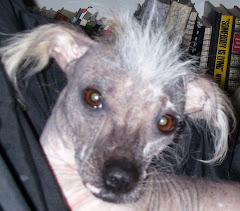My rudimentary understanding of Haiku is this:
Haiku is a Japanese art form made up of 17 on or morae (word symbols)
which paint a sensory picture of a moment, or evoke a poignant feeling, which usually
involves nature or a seasonal reference. Typically it includes a juxtaposition
of two differing images which leads to a kireji
(cutting word or turning point) that evokes a realization of how they relate to
one another. The break is usually after
the second stanza; however, can be after the first.
The English speaking form of Haiku is a poem of 17 syllables, typically
divided into three stanza composed of 5-7-5 syllables respectively. English Haiku is frequently non-rhyming, and is
not as strict at involving nature. It
uses no punctuation or capitalization, and it may or may not have a title.
I usually don’t involve nature. I also may or may not express idea
juxtaposition. I frequently am happy just to have whittled the idea down to exactly
17 syllables. In the truest sense of the
word, I do not write Haiku. I write pseudo-haiku.
Just for fun, here is my pseudo-Haiku on what I take away as the
composition of English Haiku…
juxtaposed word art
five seven five syllable idea fusion



No comments:
Post a Comment